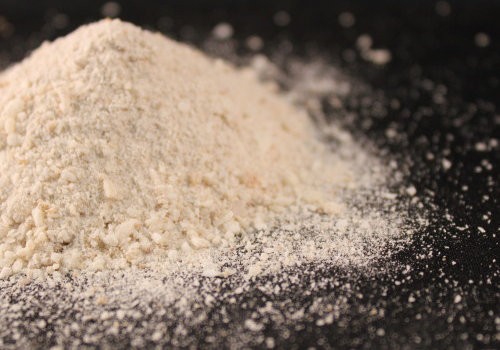
Many of the fertilizers available in the marketplace are in powder form, as they can be formulated to be more concentrated and can be shipped less-expensively than liquids. While that does make them more economical to purchase, there are some issues with fertilizer powders that can complicate life for the hobbyist. One of those problems may be a lack of homogeneity or uniformity in the powder.
A fertilizer manufacturer typically makes many different formulations utilizing a variety of minerals. They therefore keep stocks of those mineral raw materials and blend them in specific proportions to create different formulas. Some of those raw materials are powders, some are chunks, and some are “prills” – little spherical particles – and when you mix them, it’s not a truly uniform blend. To a large-scale user who might consume entire bags, it’s not a problem, but for those of us dipping a spoonful out of the package, it may result in slight differences in the final chemistry each time we mix up a batch of nutrient solution. Then there’s the measuring of the powder itself.
There are mixing recommendations of “teaspoons per gallon” or “milliliters per liter”, but those are volumetric measurements while the contents of the fertilizer package are expressed in weight percentages on the label. Even if we’ve graduated to using parts-per-million controls – a mass-to-mass measurement – we’re still stuck, because we don’t know the bulk density (weight per volume) of the formula (unless it’s provided by the manufacturer), which would allow us to do a simple mathematical conversion. The fact that the bulk density can vary between formulas further complicates matters.
Another problem is that many of the raw materials are extremely hygroscopic, meaning they “suck” moisture right out of the air over time. As there is no practical way for us to know exactly how much water has been absorbed, we can no longer use weight to accurately measure how much to use, and as it affects the bulk density as well, volume measurements are thrown off as well. So what can we do?
The answer is really quite simple: make a concentrated solution! Please Note: This is an example only; you may wish to make a more concentrated solution for convenience, but keep in mind that two pounds per gallon is a practical upper limit to the solubility of most fertilizers. I recommend staying closer to one pound per gallon for stability of the solution, especially for formulas containing calcium.
Before you even open the powder container, read the label to determine the net weight.
Remembering that a pint of water is a pound in weight, pour five pints (two quarts plus a pint) of hot water into a sealable container for every pound of fertilizer powder in the package (if you are dealing with metric measurements that would be five liters per kilogram of powder.) Add the powder and stir or shake to completely dissolve it.
You now have a 1/6th -strength (16.67%) concentrated solution of your original formula. In other words, if the original powder was 18-6-12, your solution is one-sixth of that, or 3-1-2.
The advantage of this is that it’s totally uniform (just be sure to shake well before measuring it). It’s not going to absorb more water from the air (keep the container closed to prevent evaporation), and you can now work on a volume-to-volume basis to mix your nutrient solution.
Ray Barkalow has been growing orchids for over 45 years, and owns First Rays, which offers horticultural products to the hobby grower. He may be contacted at raybark@firstrays.com and you can visit his website at FirstRays.com.
Related Articles
Early Growth Fertilizer Regiments for Propagation & Vegetative Stages
Pre-soaking Inert Media for Orchids
Proper Mulching is One of the Best Things You Can do for Your Plants




Comment here